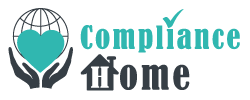
Filtering Tool for Websites
A website filtering tool puts a block on Internet users from viewing Internet sites that may include dangers to online security or content deemed inappropriate.. As a security measure against malware, adware, ransomware and “malvertising”, tools for filtering websites are becoming key elements of cybersecurity security.
A web filter tool can also enhance productivity of the workforce and help stop HR problems in the workplace. By restricting access to social media sites, online shopping portals, pornography, video streaming websites, dating sites and gambling sites, employees have fewer chances for slacking off online. Limiting access to NSFW websites will also ensure that colleagues are not exposed to objectionable web content.
Recent studies by Google has revealed that more than 800,000 websites have been infected with drive-by download malware. Similar research completed by the online security company Symantec indicates as many as three quarters of websites contain security flaws.
What this means in relation to your organization’s cybersecurity defenses is that a staff member could visit an apparently trusted website and inadvertently install malware onto their device. Malware infections are capable of spreading throughout entire networks and – if your group has a wireless network – the infection could spread to any device linked with it.
The issue with having an infected network will depend on the nature of the malware. Some adware bugs simply review online activity to send targeted advertising; but more serious infections can result in confidential company information and personal data being extracted, or your total network being encrypted and unusable until a ransom is paid for the key to unlock the encryption.
A website filtering tool uses various mechanisms to address the threat of malware. Blacklists, category filters and keyword filters work together to prevent access to web pages that contain malware or executable files that could share an infection.
- Various types of blacklist can be obtained via the Internet or the vendor supplying the web filter service. They are frequently updated as new dangers are identified in order to provide the maximum defense against the danger of malware.
- Usually a web filter tool will have preset categories that groups can choose to apply as they wish. Some tools for filtering websites offer the possibility of setting up and customizing different categories – adding extra flexibility to the Internet filtering solution.
- Keyword filters add another level of “granularity” or fine-tuning to a website filtering tool. Access to web pages including specific words can be allowed or denied depending on the organization’s acceptable use policies and the filtering parameters configured.
The website filtering tool itself should be able to prevent anonymizer services, P2P file sharing applications and sites that operate through a proxy server to mask their true identity. It is also essential that the web filter tool has SSL inspection. This feature decrypts, reads and re-encrypts data from websites with HTTPS prefixes to review the content against the filter´s parameters. Sadly these days, an HTTPS certificate is no longer a guarantee of security being provided.
Email filters have been thought of as the best way of preventing phishing emails from reaching their intended victims. Due to the increased sophistication of phishing campaigns, certain sorts of phishing emails – typically those from infiltrated email accounts – evade detection by email filters and find their way to the victims’ inboxes.
Some organizations have created staff awareness HIPAA training to identify phishing emails when they evade detection. But sometimes even this supposed last line of defense is not enough to prevent an employee clicking on a link they believe to be genuine and potentially downloading malware or ransomware onto the group’s network.
Tools for filtering websites can supply an additional line of security if they include SURBL and URIBL filters. These compare requests to visit websites, such as when an employee clicks on a link in an email, with lists of IP addresses from which spam email is known to have come from – spam emails and phishing emails often sharing similar origins.
This process can help undermine phishing attacks that mask the true destination of a link with HTML code. Incredibly 99.5% of “secure” websites (those with SSL Certificates) with the word “PayPal” in their URL are fake phishing websites. SURBL and URIBL filters can prevent your network users from visiting these sites by mistake.
ComplianceHome is a registered trademark. Copyright © 2025 ComplianceHome. All rights reserved.